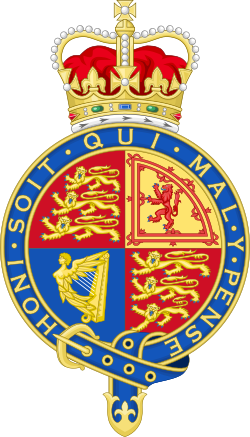St Catharines Milling and Lumber Co v R facts for kids
Quick facts for kids St Catharines Milling and Lumber Co v R |
|
|---|---|
 |
|
| Court | Judicial Committee of the Privy Council |
| Full case name | St Catharines Milling and Lumber Company v The Queen |
| Decided | 12 December 1888 |
| Citation(s) | [1888] UKPC 70, 14 App Cas 46 |
| Case history | |
| Appealed from | , affirming a decision of the Court of Appeal for Ontario, which affirmed the judgment of the Chancery Division, restraining the defendants from cutting timber on lands in Ontario claimed to be public lands of the Province. |
| Court membership | |
| Judges sitting | Earl of Selborne, Lord Watson, Sir Arthur Hobhouse, Sir Barnes Peacock, Sir Montague E. Smith and Sir Richard Couch |
| Case opinions | |
| Decision by | Lord Watson |
The case of St Catharines Milling and Lumber Co v R was a very important court decision in Canada. For over 80 years, it shaped how Indigenous land rights were understood. The court, called the Judicial Committee of the Privy Council, decided that Indigenous peoples' right to their land depended on the "Crown's pleasure." This meant the government could take away these rights at any time.
This case was about Treaty 3, an agreement with the Ojibwe people. It also helped define how power is shared between the federal government and provinces in Canada, especially concerning land and Indigenous peoples.
Contents
Why This Case Was Important
This case was about who owned and controlled certain lands in Canada. It involved a large area that was part of Treaty 3, signed in 1873. At the time, people thought these lands were in an area called Rupert's Land.
Land Ownership and Treaty 3
Later, a new law in 1889 changed the border between Ontario and Manitoba. This meant about two-thirds of the treaty land ended up in Ontario. The Canadian government believed it had the right to manage these lands because of the treaty. They also thought their power came from the Constitution Act, 1867, which gave them authority over "Indians and Lands reserved for the Indians."
The Lumber Company's Permit
A company called St Catharines Milling and Lumber Company got a permit from the federal government. This permit allowed them to cut timber near Wabigoon Lake. However, the Province of Ontario disagreed. They believed the land belonged to them, not the federal government. This disagreement led to the court case.
What the Courts Decided
The case went through several courts before reaching the highest one.
Decisions in Lower Courts
In 1885, a judge named Chancellor Boyd made a decision. He said that "Lands reserved for the Indians" only meant specific "Indian Reserves." He believed it did not include other lands that had not been officially set aside for Indigenous people.
The Court of Appeal agreed with this decision. They also added that the lands transferred to Ontario by the 1889 Act, except for the Indian reserves, belonged to the Crown (the government) in Ontario. The Supreme Court of Canada later agreed with these decisions.
The Privy Council's Ruling
The final decision came from the Judicial Committee of the Privy Council. This was the highest court for Canada at the time. Lord Watson was the judge who wrote the main opinion.
He explained that Indigenous land rights came from the Royal Proclamation of 1763. This was a special announcement from the King of England. Lord Watson said that Indigenous peoples had a right to use the land for hunting and living. However, he called this a "personal and usufructuary right." This meant it was a right to use the land, but not to fully own it. He said this right depended on the "good will of the Sovereign" (the King or Queen).
Lord Watson also stated that the Crown always had a "substantial and paramount estate" over the land. This means the government had a higher, underlying ownership. He said this full ownership, called plenum dominium, would happen when Indigenous title was given up or ended.
How This Case Changed Things
The St Catharines Milling decision had a big impact on Indigenous rights in Canada.
Ongoing Challenges
One issue was that the Privy Council said Ontario should take over Canada's duties under the treaty. This was because Ontario benefited from the land. However, later court cases did not agree with this point.
Another case, Ontario Mining Co. v. Seybold, further limited Indigenous rights. The Privy Council decided that Indigenous peoples did not have a full ownership interest even in the reserves set aside for them.
Finding Solutions
These decisions created many problems. It took a long time and many agreements between the federal and provincial governments to find solutions. One important step was the Canada/Ontario Indian Reserve Lands Agreement. A more complete solution was reached in 1986 with the Indian Lands Agreement (1986) Act.
Even though some parts of Lord Watson's decision were later changed by the Supreme Court of Canada in a case called Guerin v. The Queen, the St Catharines Milling case is still a key starting point. It helps us understand the history of Indigenous law in Canada.

